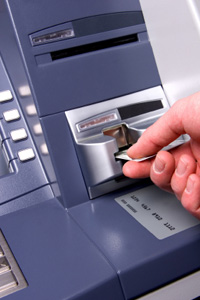Mobile applications have become ubiquitous. While many of these apps are games and social media platforms, an increasing number have been developed to help individuals with their personal finances. Which leads to an interesting question: what should you look for in a personal finance app?
Category
One of the first things to consider is what type of financial apps may be most useful. Five basic categories of these apps exist:
Budget tracking apps allow users to record expenditures as they are made, in order to keep track of bank balances and budget categories. Some allow users to make a budget and then watch how closely expenditures are tracking to it.
Financial assistant apps collect, store, and report information from users’ various savings and investment accounts, providing a single place to keep track of asset performance.
Loan calculator apps estimate payments and current balances for loans. Some also track how long it will take to pay off one or more loans.
Spending and saving apps allow users to perform a wide range of activities, including “what-if” scenarios.
Banking apps offer FDIC-insured banking options, including (in some cases) faster direct deposits, bill paying, and other choices for your account.
Criteria
Once a user has decided on a category of app that may be useful, there are additional criteria to consider.
Credibility. As everyone knows, not everything written on the internet is true. For example, The Wall Street Journal and The New York Times are generally considered more credible than an anonymous blog. The same principle applies to apps: understand who’s providing the information.
Security. Before using any financial app, read the privacy or security statement. This can typically be found at the bottom of the company’s web page or in the “About” section of their website. If you don’t find one online, contact the company to request a copy.
Clarity. A personal finance app should provide information that is easy to understand. There are some apps that provide detailed charts of stock performance using a wide variety of financial analyses. However, if you don’t understand the underlying analysis, the app may be useless.
Relevance. Remember the old saying: “I suppose it is tempting, if the only tool you have is a hammer, to treat everything as if it were a nail.” The same applies to financial information. A mutual fund company may be a great source of information about investing concepts, but it may be less useful at providing information about tax management.
Using an app to help with your personal finances may be a great first step in becoming a better money manager, but asking yourself a few key questions before you download may help you select the app that best fits your personal finance needs.
The content is developed from sources believed to be providing accurate information. The information in this material is not intended as tax or legal advice. It may not be used for the purpose of avoiding any federal tax penalties. Please consult legal or tax professionals for specific information regarding your individual situation. This material was developed and produced by FMG Suite to provide information on a topic that may be of interest. FMG Suite is not affiliated with the named broker-dealer, state- or SEC-registered investment advisory firm. The opinions expressed and material provided are for general information, and should not be considered a solicitation for the purchase or sale of any security. Copyright 2024 FMG Suite.






